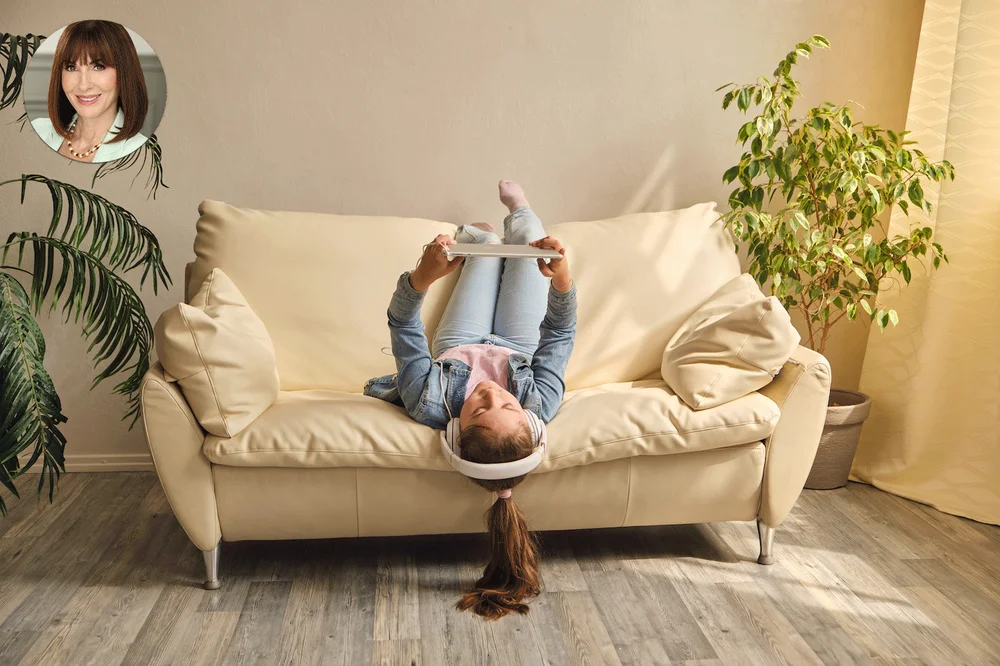Screen Time and Brain Health: Setting Healthy Limits for Children
Remember those commercials in the 1980s that showed an egg hitting a frying pan, warning, “This is your brain on drugs”? If that were modified to target today’s youth, the most popular and widely used drug wouldn’t be what we consider a drug at all—it’d be our screened devices. And we might see the egg shrinking rather than sizzling.
We know that screen time among youth has spun out of control in recent years, and we’re now learning more about the scary consequences of that reality. With televisions, video games, computers, and handheld electronics like smartphones and tablets, kids now have numerous ways to remain attached to screens 24/7. Unfortunately, this new addiction plaguing our youth creates a long list of negative effects—even shrinking young, still-developing brains.
How Screen Time Affects Children
When researchers at the National Institutes of Health performed brain scans of 4,500 children, they found a link between excessive screen time and negative consequences on the brain. Most alarmingly, children with daily screen time usage of more than 7 hours showed premature thinning of the cortex, which is the outermost brain layer. This part of the brain is responsible for processing information received from the physical world.
Because brain health is mental health, it’s no surprise that screen time also affects children’s mental well-being. Studies have linked too much screen time with an increased risk of depression, anxiety, low self-esteem, and other mental health issues. In late 2023, attorneys general in dozens of U.S. states even filed a lawsuit against the tech giant Meta (owner of Facebook and Instagram), claiming that it “has contributed to a teen mental health epidemic by intentionally designing its Platforms to ensnare children’s attention.”
In this suit, attorneys claimed that social media features such as personalization algorithms, alerts, infinite scroll, and autoplay were specifically designed to hook young users and keep them addicted. They charged that these platforms intentionally manipulate, engage, and monetize young people, ultimately luring them into excessive and even compulsive usage. Indeed, young people who heavily use social media have poorer sleep patterns (associated with depression and anxiety), are less able to regulate their behavior, and may even be more likely to feel hopeless or suicidal.
Children also show an increased risk for attention problems and hyperactivity when they’re exposed to too much screen time at a very young age. According to a 2019 Canadian study, kids who were exposed to more than 2 hours of daily screen time by the age of 5 were almost 8 times more likely to meet the criteria for ADD/ADHD than those who spent less than 30 minutes a day looking at a screen.
These effects can last a lifetime, as mental health issues like ADD/ADHD are associated with poorer school and work performance, less financial success, substance abuse, and even higher divorce rates. In other words, the screen time choices you make in the first years of your kids’ lives will have a lifelong effect, so it’s crucial to choose wisely.
Screen Time Recommendations by Age
Wondering what screen time limits are appropriate for your child’s age group? Here are some general recommendations:
Preschool
Restrict your preschooler’s screen time to no more than 30 minutes a day. You’ll also want to ensure that any programming consumed is enriching rather than disturbing. For example, use this time to watch educational programming or video chat with distant family members.
Elementary school
According to the American Academy of Child & Adolescent Psychology (AACAP), on average, children from ages 8-12 in the U.S. spend 4-6 hours a day watching or using screens. This is far more than the recommended amount, which is no more than 1.5 hours per day for ages 6-10.
Middle and high school (preteens and teenagers)
A Pew Research Center survey of 1,453 U.S. teens ages 13-17 and their parents, conducted in late 2023, found that 95% of teens have access to a smartphone, and about 6 in 10 say they use social media sites TikTok, Snapchat, or Instagram. Roughly half of parents (47%) say they limit their teen’s phone time, while 48% don’t. Keep in mind, while you set limits with your teens, that experts recommend no more than 2 hours a day of screen time—regardless of age.
7 Helpful Tips to Limit Children’s Screen Time

Here are some effective ways to get your kids off the screens and on their way to improved brain and body health:
- Use parental controls. Monitor and limit the time your child spends on devices. You can do this by changing the settings on their devices or with parental-control apps.
- Create rules around screen time. Design a routine that children can get used to, then be sure to consistently enforce those limits. Rules can include:
-
- No screens during dinner. Gathering around the table, rather than the TV, is healthier. Eating in front of the TV can promote obesity, while watching TV in general is associated with developing habits like cigarette smoking, early sexual activity, and poor academic performance.
- No screens just before bed. Stimulating content before bedtime can interfere with sleep. And lack of quality sleep increases the likelihood of negative mental health effects. In fact, you might consider making your child’s bedroom a screen-free zone
- Mandatory screen-free time. “Tech timeouts” are beneficial for the entire family. Simply establish a cutoff time when all devices will be turned off for the evening. Or establish one weekend day as tech-free each week.
- Encourage daily physical activity, preferably outdoors. One negative effect of too much screen time is that children miss out on the increased blood flow to the brain that exercise generates. Get your child outdoors to a park or swimming pool, sign them up for a sports team, or seek out events at the local activity center. These efforts boost the brain and the entire body.
- Stick to a single screen only. Nowadays, it’s not uncommon for multiple screens to be vying for our attention at once, such as a television, smartphone, and computer turned on in a single room. This promotes lack of focus, overstimulation, and burnout. Use one screen at a time.
- Communicate with your child. Informing your young one about responsible media consumption is a must. Talk to them about important topics like advertising, social media, online privacy, and cyberbullying.
- Set an example. In the Pew Research survey mentioned above, it wasn’t just teens’ screen use under the microscope. The report stated, “Nearly half of teens (46%) say their parent is at least sometimes distracted by their phone when they’re trying to talk to them.” Make sure you’re practicing what you preach when it comes to responsible screen use.
- Get creative. Why not engage your child with activities that ignite their creativity off-screen? Learning a musical instrument or a second language, trying a new art form or hobby, or simply reading physical books are all fun and engaging ways to get away from screens.
Our Kids Deserve Healthier Screen Habits
While juggling overwhelming responsibilities and being bombarded with constant technological advances, it’s no wonder that so many parents have relied on screens to entertain or distract their children. But in years past, experts weren’t yet aware of the shocking range of negative impacts this choice would have on our youth.
Today, we know more about these effects, and we must all do our part to reduce our own and our children’s screen time to foster healthier levels of consumption. It’s time to step away from the addictive nature of “virtual reality” and start living life to the fullest—in real life!
- Screen Time and Brain Health: Setting Healthy Limits for Children - April 16, 2024
- Raising Brain-Healthy Kids: Tips for Parents to Support Cognitive Development - April 11, 2024
- Healing from Trauma: Empowering Stories of Resilience and Recovery - April 5, 2024



